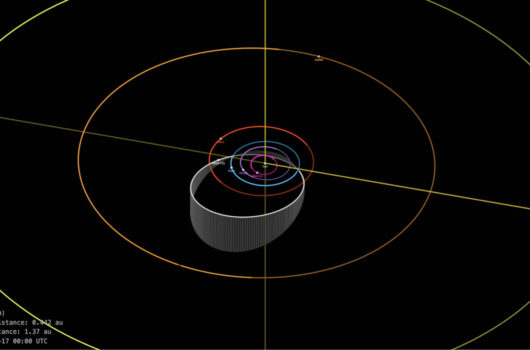On the Impact of Neutrino Decays on the Supernova Neutronization-Burst Flux
On the Impact of Neutrino Decays on the Supernova Neutronization-Burst Flux
View
Abstract
The discovery of non-zero neutrino masses invites one to consider decays of heavier neutrinos into lighter ones. We investigate the impact of two-body decays of neutrinos on the neutronization burst of a core-collapse supernova – the large burst of ![]() during the first 25 ms post core-bounce. In the models we consider, the
during the first 25 ms post core-bounce. In the models we consider, the ![]() , produced mainly as a
, produced mainly as a ![]() in the normal (inverted) mass ordering, are allowed to decay to
in the normal (inverted) mass ordering, are allowed to decay to ![]() or
or ![]() , and an almost massless scalar. These decays can lead to the appearance of a neutronization peak for a normal mass ordering or the disappearance of the same peak for the inverted one, thereby allowing one mass ordering to mimic the other. Simulating supernova-neutrino data at the Deep Underground Neutrino Experiment (DUNE) and the Hyper-Kamiokande (HK) experiment, we compute their sensitivity to the neutrino lifetime. We find that, if the mass ordering is known, and depending on the nature of the Physics responsible for the neutrino decay, DUNE is sensitive to lifetimes
, and an almost massless scalar. These decays can lead to the appearance of a neutronization peak for a normal mass ordering or the disappearance of the same peak for the inverted one, thereby allowing one mass ordering to mimic the other. Simulating supernova-neutrino data at the Deep Underground Neutrino Experiment (DUNE) and the Hyper-Kamiokande (HK) experiment, we compute their sensitivity to the neutrino lifetime. We find that, if the mass ordering is known, and depending on the nature of the Physics responsible for the neutrino decay, DUNE is sensitive to lifetimes ![]() s/eV for a galactic SN sufficiently close-by (around 10 kpc), while HK is sensitive to lifetimes
s/eV for a galactic SN sufficiently close-by (around 10 kpc), while HK is sensitive to lifetimes ![]() s/eV. These sensitivities are far superior to existing limits from solar-system-bound oscillation experiments. Finally, we demonstrate that using a combination of data from DUNE and HK, one can, in general, distinguish between decaying Dirac neutrinos and decaying Majorana neutrinos.
s/eV. These sensitivities are far superior to existing limits from solar-system-bound oscillation experiments. Finally, we demonstrate that using a combination of data from DUNE and HK, one can, in general, distinguish between decaying Dirac neutrinos and decaying Majorana neutrinos.





